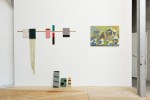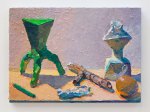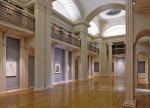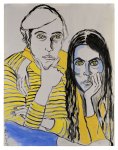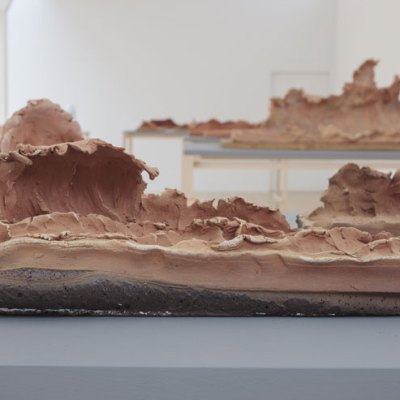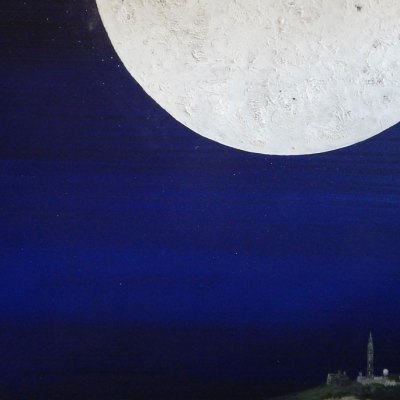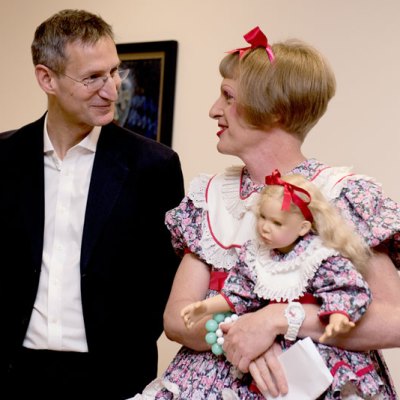The Edinburgh Art Festival (until 28 August) has its challenges. There’s so much else happening in the city in August, as part of overlapping but separate programmes – the International Festival, the Book Festival, and of course, the Fringe – that it can feel a bit lost in the general welter of human activity. It’s particularly vulnerable to criticism every other year, when the biennial Glasgow International (GI) provides a point of comparison – and director Sarah McCrory’s 2016 edition was excellent. Reviewing the GI, the Guardian’s Laura Cumming concluded: ‘Glasgow has what the Edinburgh art festival long ago lost, a feeling of both fringe freedom and official festival.’ Ouch. Yet comparisons, as they say, are perhaps invidious: these are after all two very different beasts, and the Edinburgh Art Festival manages to perform in both established venues and temporary ones. Here are some of this year’s highlights.
‘Tim Dodds, Susie Green, Emma Hart and Susan Mowatt: Still life with flying objects’, at Rhubaba (until 28 August)
The engaging title doesn’t mislead: still-life elements inform the works in this group show, but they are queasily misshapen, twisted, scraped off and reapplied in a variety of intriguing ways. This is most apparent in Tim Dodds’ painted studies of objects that look familiar initially, but then shift into another dimension. The faceted dodecahedrons in Aries confound mathematical logic, while an arrangement of a totemic green shape, a stick, a ball, and a vessel in Still Life – Tripod defies description: it is more Lovecraftian shrine than still-life. Two large, dramatic tapestries by Susan Mowatt, Dark Vertical (1991) and Taker (1991), cocoon the space, their surfaces roiling with inchoate shapes that are part abstract expressionist canvas, part glitch excrescence. In Susie Green’s sculpture OOOOOOOO (2015) a wall of silver chains has caught an array of detritus along its hem like insects on flypaper. Emma Hart’s video LOST (2009–11), which investigates the abandoned hinterlands of dust and lost objects beneath beds and behind radiators, ties things together, resulting in a coherent but refreshingly varied show of shedding bodies and anthropomorphised objects. Close your eyes to Leith Walk: you could be in Glasgow.
‘Alice Neel: The Subject and Me’ at Talbot Rice Gallery (until 8 October)
The raw facility with which Alice Neel (1900–1984) wielded her paintbrush, noting down the forms of the family members, friends and acquaintances who surrounded her in New York with thick black and blue lines, is never less than energising. Talbot Rice’s exhibition is, moreover, unusually put together. It proceeds backwards, opening with several accomplished works completed in the early 1980s (the last years of her life), while her drawings from the 1930s, ’40s and ’50s fill the second gallery. This makes for some powerful moments of reverse unravelling that contrast starkly with William Playfair’s genteel Georgian gallery interior. In Self Portrait, Skull (1958) Neel depicts herself as a terrifying death’s head in a moment of psychological and physical breakdown. Figurative elements briefly coalesce – an eye or a face might come into focus, while feet and arms remain mere sketches – mirroring fluctuating human relationships. In the documentary film by Neel’s grandson shown here, the artist describes how, when painting people, she ‘went so out of myself and into them’ that afterwards she felt like ‘an untenanted house’, encapsulating the intensity and estrangement in her portraits.
Jo Spence at Stills Centre for Photography (until 16 October)
The extent of Jo Spence’s intervention into photographic representational systems is beginning to be better understood and appreciated, but there remains much to learn, and the chance to see her work is always welcome. Stills packs a lot into a relatively small space. Images from Spence’s important, large-scale projects are included here, such as Remodelling Photo History and A Picture of Health. Most well-represented is the Phototherapy series, in which Spence dressed up as multiple figures, exorcising class and gender stereotypes that were simultaneously personal and political. In Phototherapy: My Mother (1988) Spence leans over and hooks two empty milk bottles with one hand, while her other rests on a broom handle: she peers up at the viewer through red wing-tipped spectacles with a gaze that is both appraising and vulnerable, deconstructing the image of the ‘working class mother’ while registering its potency. Together with these better-known projects, Spence’s collaborative degree show work Family, Fantasy and Photographs (1981) is on display for the first time since 1981. A series of panels analyse multiple aspects of media representation: clippings celebrating Princess Diana as the world’s ‘happiest housewife’ aside, it hasn’t (depressingly) dated.
Narratives of Disease (1990), Jo Spence, collaboration with Tim Sheard. © the Estate of Jo Spence. Courtesy Richard Saltoun Gallery
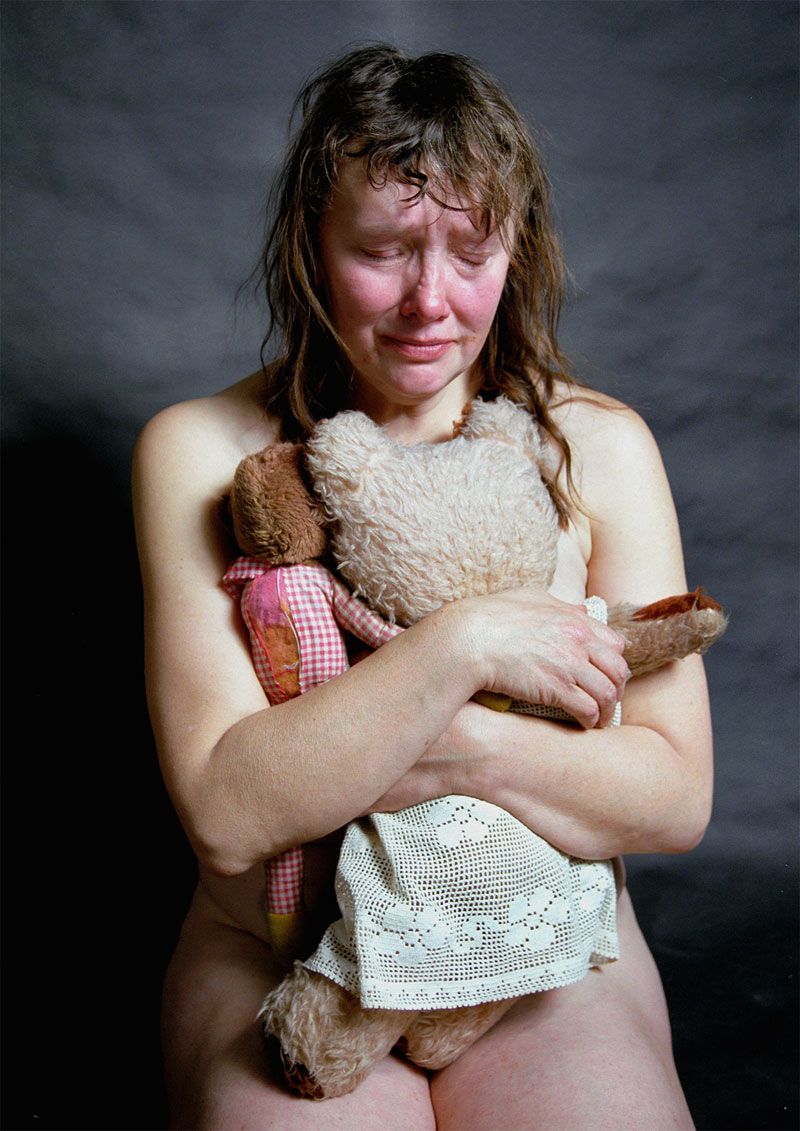
The Brownlee Brothers, Dorian Jose Braun, Paloma Proudfoot & Aniela Piasecka and Jack Saunders at Platform 2016 (until 28 August)
This is Platform’s second time at the Festival; last year the initiative, which provides a showcase for artists at the start of their careers, was also an Apollo pick. Although inevitably a little hit and miss, it is a significant boost to the festival programme. I wasn’t there to see one of the performances choreographed by Aniela Piasecka in Paloma Proudfoot’s installation Made to be Broken (2016), but going by the latter’s sculptural arrangement it would be worth timing your visit. Warped ceramic bowling balls and tenpins pool gently together, losing their definition, while a delicate gavel sits on a cushion, presumably waiting for the next moment it will be used to more definitively decompose something. Clay shards already litter the space, pastel remnants of a teenage dream that has fractured into something darker. There’s a humorous swagger to the work of the Brownlee Brothers and Jack Saunders: the latter leavens his videos and images with provocative but thoughtful texts. In Unrelenting Love (2013), film clips of frankfurters grotesquely parading down production lines are spliced with textual accompaniments – ‘being chewed up and spat out’; ‘you know where the toilet is’ – fusing the relentlessness of capitalist systems with bodily abjection in one easy-to-digest gif-like sequence.
‘Jennifer Bailey: Will I Make a Good Father, Mother, Sister?’ and ‘Simon and Tom Bloor: Structure for the City Observatory’ at Collective
Collective is about to undergo a massive development programme that will see it expand into the old observatory site on Calton Hill, and its programming during the Festival embraces this transitional status. If you’ve breath left after climbing Calton Hill itself, you can carry on up the shlockly, low-fi (in design, not construction, it should be stressed) steps made by Simon and Tom Bloor for a full view of the shuttered building. Futurist DIY rubs up against an Enlightenment monument – a pairing that would be welcome more often in Edinburgh’s rather staid built environment. In the gallery, Jennifer Bailey uses wall drawings, photographs and sculpture to explore family relationships and their encoding within patriarchal structures. It’s a deceptively lean show – the niggling worry of the title gradually transfers to both works and viewer.
That’s Genetic (2015), Jennifer Bailey. Courtesy of the artist

Also recommended…
‘More lasting than bronze’ (the commissions programme; until 28 August)
Dotted across Edinburgh, the works in the commissions programme can either be experienced as a trail, simply as you happen to pass them. Down on the Leith docks Ciara Phillips’ Every Woman is the latest of several ‘Dazzle’ ships commissioned to commemorate the First World War. Phillips’ dynamic camouflage consists of designs taken from her screen prints and spliced together, and references women’s involvement in the original Dazzle designs. Jonathan Owen’s Untitled sits inside the normally closed Burns Monument. It reworks a statue of a nymph into a bowed, distorted figure which dissolves partially into the links of a thick, heavy chain, suggesting the subjugation effected through patriarchy and slavery during the Enlightenment period.
Untitled (2016), Jonathan Owen. Photo: Ross Fraser McLean/ Studio RoRo
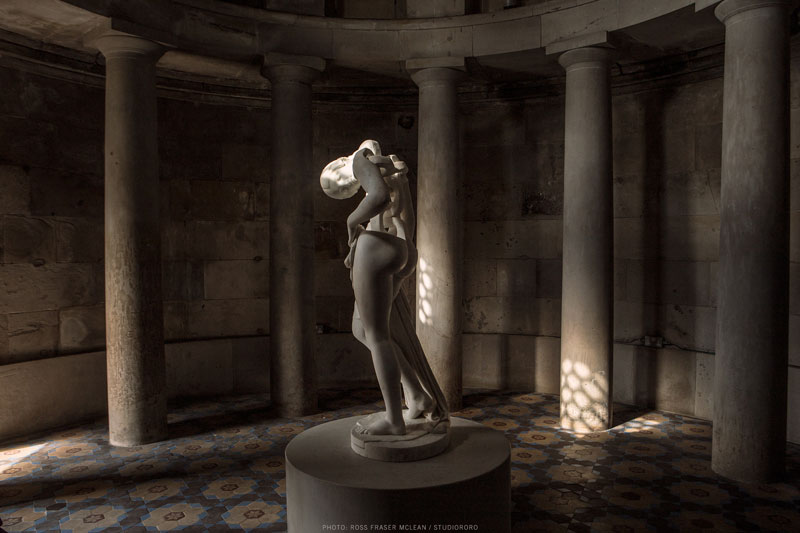
Jupiter Artland
If the combined festival mayhem gets too much, head out to Jupiter Artland (buses 27 and X27) for Christian Boltanski, Hayley Tompkins and Caroline Mesquita – as well as some greenery and calm.
Life Mounds (2005–present), Charles Jencks, at Jupiter Artland. Photo: Allan Pollok-Morris
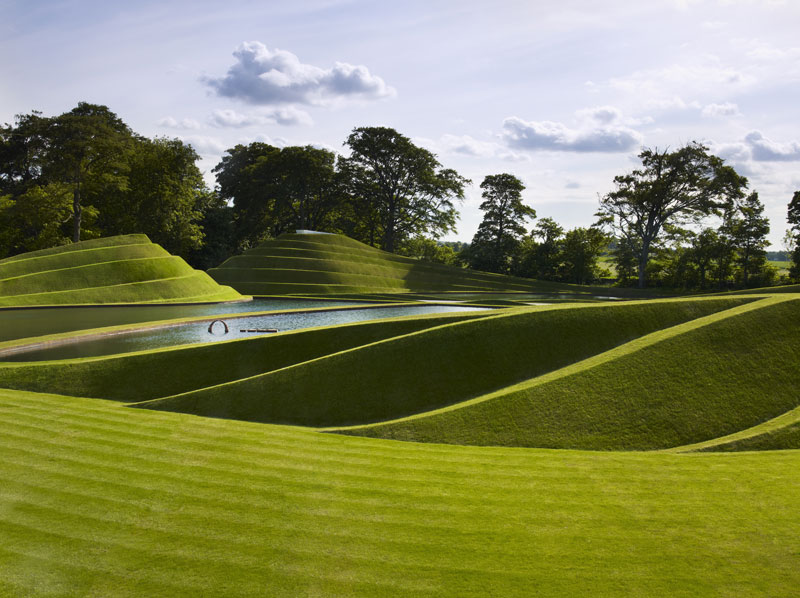
The Edinburgh Art Festival runs at various locations throughout the city until 28 August.
